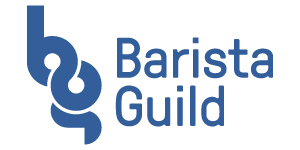Barista Trip 2011 Part 2: Pocos de Caldas Brasil

The second half of our trip involved us traveling from Salvador to Sao Paulo and then driving into Pocos De Caldas. This part of the trip was hosted by our wonderful friends at Bourbon Specialty. Pocos De Caldas is a very interesting town that was settled by Italians and Portuguese as people spread outward from Sao Paulo. The European influence is evident while strolling through the city center and taking in the architecture and local Italian cuisine. Pocos De Caldas is a town settled within a gigantic volcanic crater. Our hotel sat inside a huge dormant volcano.


The farms here range from 1100-1400 meters and are supported by nutrient rich volcanic soil. We visited many farms in the region. It was really interesting for the group to get a better understanding of the growing microlot market and how the farmers in the region are supplying it in different ways.
The large and small farms in this region have different approaches to microlot separation, both of which are working for each group. The small farms are picking only the ripest cherries, hand sorting, wet milling through a local or on site wet mill, and patio/raised bed drying.
The large farms, which are also producing some incredible micro lots, had a bit of a different approach; the pickers are strip picking then sorting at the mill or picking ripes and boya (raisin naturals on the tree). We learned from the larger farms that every coffee has a home, especially in a high coffee market like this, so the under-ripes that get picked when stripping are still sold at a fairly good price as commercial coffee. The large farms here will sort the ripe cherries then cup samples of each lot to determine if it is microlot quality and should be kept separate or if it should be blended to create a quality specific lot.
This duality was very interesting to experience first hand. We cupped coffees of both the small and large farms, and each had some equally impressive coffees (some unrested coffee creeping toward 90 points), although they took different approaches to get there. The economies of scale for a small producer requires them to put a high level of labor to the picking. These small producers will often take 5-6 passes on different days on a single tree to get all the ripes, maximize weight as ripe cherries weight more, and get the most money for their large percentage of high quality coffee on a relatively small crop.
The large farms have made a different decision where the best allocation of resources are for their farms. The pickers on the large farms are not as incentivized to pick only ripes, and the farm owner is not as motivated to process only ripes due to shear volume and high market prices. They would rather produce around 25% really high quality microlots through separation on the back end and save money by not having his well trained staff spend quadruple the amount of time picking one area.
Both ways are valid, and both ways allow different sized producers to maximize their profit during a given year while still producing some high quality coffees. In a perfect world would both farms pick only ripes? Maybe, but producers of all sizes must make conscious and well thought out decisions as to where their hard earned money is best invested on their farms. That is not our decision to make for them.
The baristas and the rest of the crew got a ton of experience and gained new perspectives on coffee processing during this part of the trip. Gianni said that the landscape of the regions surrounding Pocos De Caldas reminded him of Sicily. It was a truly remarkable backdrop for the final leg of our trip. We partied for Alejandro and Sarah's double birthday on Saturday, we got behind the bar of a local roaster retailer, and we left Brasil full of both new exciting coffee knowledge and extraordinary amounts of meat. I am still riding high now that I am home from this trip. I am just incredibly grateful that we were able to get the Origin Trip Sponsorship set for the 2011 cycle, and that these amazing guys were the winning baristas. Viva Espresso!
-Noah Namowicz
